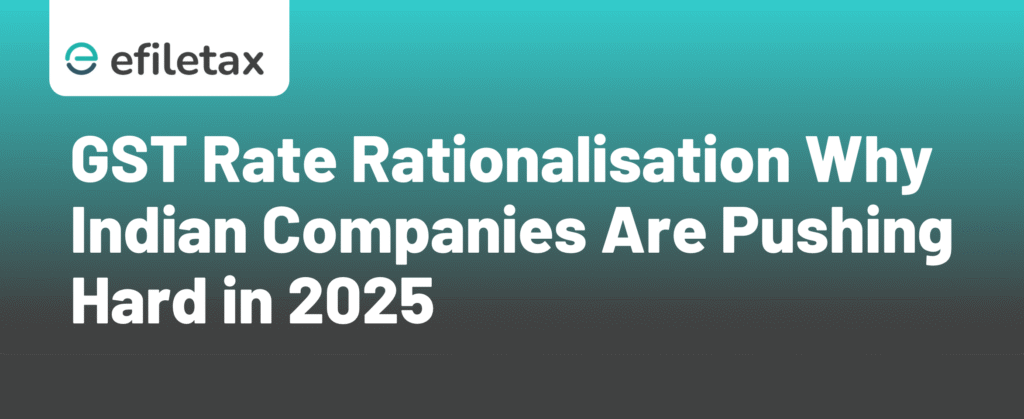
GST Rate Rationalisation: Why It’s the Top Ask from Indian Businesses
GST rate rationalisation tops companies’ list of demands in 2025—and for good reason. With multiple tax slabs, inverted duty structures, and classification confusion, businesses across sectors are demanding a simpler, more logical GST regime.
What Is GST Rate Rationalisation?
GST rate rationalisation refers to the government’s proposal to reduce the number of GST slabs and simplify tax rates. The aim is to make indirect taxation more efficient, reduce disputes, and support ease of doing business.
Currently, GST has five key slabs:
- 0% – Essential items like fresh vegetables
- 5%
- 12%
- 18% – Most goods and services fall here
- 28% – Luxury and sin goods
There’s also a compensation cess on items like tobacco, aerated drinks, and luxury cars.
Why Companies Want GST Rate Rationalisation
GST rate rationalisation tops companies’ list of demands because of these ongoing challenges:
1. Inverted Duty Structure (IDS)
- Inputs are taxed at a higher rate than outputs
- Creates cash flow issues due to pending refunds
- Affects sectors like textiles, footwear, and fertilisers
2. Multiple Slabs Confuse Compliance
- Similar products are taxed differently (e.g., biscuits at 18% vs cakes at 5%)
- Leads to classification disputes and litigation
3. High Working Capital Blockage
- Refund delays under IDS impact MSMEs severely
4. Global Competitiveness
- Businesses seek a unified tax rate to simplify operations and compete globally
Government’s Stand on Rationalisation
The GST Council, in its meetings during 2022–2024, had set up a Group of Ministers (GoM) to:
- Review current rate structures
- Suggest rationalisation roadmap
- Reduce classification disputes
As per CBIC and PIB reports, no final decision has been taken yet, but a two-rate structure (8% and 15–16%) has been discussed.
Official Source: PIB GoM Brief – Feb 2024
What Could Change Post-Rationalisation?
| Item Category | Current Rate | Proposed Rate (Indicative) |
|---|---|---|
| Packaged Food | 5%–12% | 8% |
| Footwear | 5%–18% | 8% |
| Electronics | 18% | 15% |
| Luxury Goods | 28% + Cess | 16% + Cess |
Note: Final rates are pending GST Council approval.
Expert View: A CA’s Perspective
“Rationalising GST rates will ease classification issues and reduce tax litigation. But implementation must be smooth, especially for small traders using billing software and POS systems.”
— CA Rahul Mehta, Indirect Tax Consultant
Practical Tip for Businesses
Prepare Now: Even before the new rates kick in, businesses should:
- Map inventory to current GST rates
- Assess impact on pricing
- Update ERP/software in advance for quick transition
FAQ – GST Rate Rationalisation
Q1: When will GST rate rationalisation happen?
There’s no fixed timeline. Discussions are ongoing at the GST Council level.
Q2: Will my product’s tax rate go up or down?
It depends. Items taxed at 5% or 28% may shift toward the median rate (likely 8%–15%).
Q3: What happens to my existing input credit?
ITC already availed will remain valid. Transition provisions will be notified by CBIC.
Summary
GST rate rationalisation tops companies’ list of demands due to inverted duty structures, refund delays, and compliance complexity. Businesses are urging the GST Council to move towards a two-rate system to simplify taxes and boost ease of doing business.
Final Thoughts
GST rate rationalisation is not just a tax issue—it’s a business priority. Whether you’re a small trader or a large enterprise, staying ahead of these changes is vital.